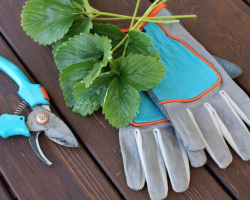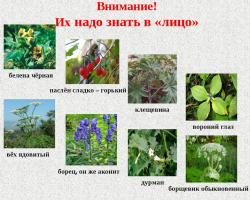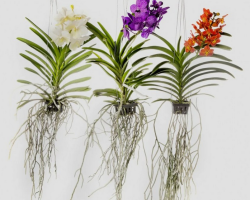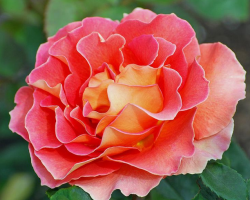In this article, we will talk about how to correctly feed currants in the spring, summer and autumn periods.
Content
- How to add suction for currants: methods
- Top dressing of black, white, red currant in the spring: methods, recommendations
- Top dressing of black, white, red currant in the summer: features, recommendations
- Top dressing of black, white, red currant in the fall: Features
- Video: Black currant care, loosening, necessary top dressing, pruning, mulching, cuttings
Currant bushes are found in almost every summer cottage or garden. This plant has about two hundred varieties that differ in its utility. From delicious berries, jam and jams are prepared, and they are also used as fillings for pies or a therapeutic agent during a cold. Each gardener dreams of obtaining a plentiful crop. To get it, it is important to feed the plant correctly, even despite all its unpretentiousness.
How to add suction for currants: methods

Currant feeding is possible in two ways - root (watering directly under the bush) or fucked up (spraying leaves). The first type is the main one, and the second is used as an additional one.
For root feeding, liquid and dry compounds are used. As a rule, the solutions are quickly absorbed into the soil and immediately get to the roots, and dry top dressing takes time to dissolve.
Spraying is allowed only when warm weather is set, including at night. This feeding method is used as needed. Leaves always react positively to him with increased growth and full -fledged development.
By the way, spraying should be done only at night when the sun comes in. Wet foliage in the sun can burn.
Top dressing of black, white, red currant in the spring: methods, recommendations
The very first top dressing of currants is carried out in the spring. It helps to strengthen the growth of the shrub and the development of new shoots. The yield of the bush depends on how timely the procedure is carried out. You can use different types of top dressing.
- The procedure is carried out, as a rule, in early spring, when the bushes are just starting to wake up and acquired by the kidneys. During this period, culture requires as much nitrogen as possible. Mineral or organic fertilizers in its pure form are perfect for top dressing.
- The second time they feed the bushes after two weeks. Now organic or complex fertilizers containing phosphorus or potassium are introduced. They scatter right under the bush.
- After another two weeks, bushes are fed for the third time. A liquid nutrient solution for spraying is already used here. You can use any fertilizer.
In specialized stores, gardeners are offered a huge selection of funds to increase the crop. It is important to navigate in them. Let's analyze the main types of spring top dressing.
- Nitrogen. Give a lot of useful substances currant. Their action is aimed at stimulating the growth of the crown and the appearance of new leaves. Just be careful, since an overabundance, although it will lead to a good increase in greenery, but the growth of the fruit will be suspended. Nitrogen is contained in compost with peat, poultry, ammonium nitrate, anhydrous ammonia, ammonium sulfate, calcium cyanamide and urea. All this can be used for top dressing.
- Complex. In this case, look for mixtures marked "spring" or "spring". Keep in mind that any top dressing should be carried out on wet land. So combine it with watering or conduct after rain. In addition, stimulants for processing seedlings are used. Complex drugs are created by mixing elements or chemical reaction. They include a high concentration of active substances. That is why they are not required for top dressing. Popular drugs are Nitrofosk, ammophos, potassium nitrate, ammophosphate. There are multicomponent compositions. They include all the main elements that require currant. They are especially effective in areas where poor soil. The drug is selected depending on the type of soil - zinc (reduces alkalinity), copper (suitable for swampy terrain), manganese (for alkaline chernozem), boron (for sand soil), molybdenum (to reduce acidity).
- Phosphorus. Experienced gardeners advise using phosphorus-potassium top dressing. 10 g of potassium sulfate and 40 g of superphosphate are divorced for one shrub. The size of the fetus depends on the phosphorus. Also, we must not forget Kalia, because it gives the sweetness of berries. That is why summer residents often mix substances. The most popular drugs are Superphosphate, precipitum, phosphorite and bone flour, Thomasshlak and other substances. Phosphate fertilizers are very important for currants. They improve the energy exchange of shrubs.
- Organic. They are usually used to replace minerals, separately or even jointly. It can be compost, bird droppings, manure. Thanks to the complex approach, excellent results can be achieved. That is why gardeners often mix several components together. It can be bird droppings, manure, compost and so on.
Top dressing of black, white, red currant in the summer: features, recommendations

Currant feeding in summer will differ depending on the growth stage. In particular, methods will differ during and after flowering, when the crop is already harvested.
Currant feeding during flowering
The first flowers and small berries on currants appear in the first half of June. During this period, the shrub requires a basal top dressing. As a rule, it is done with liquid organic and complex mineral fertilizers. It is important that their composition does not have nitrogen.
For ripening of berries, potassium humate, potassium salt and kalemagnesia are best suited. They are applied according to the instructions. You will feel the effect after the ripening of the berries - they will be sweet and fragrant. This is especially pronounced during the cold and rainy summer. Fertilizers complement organic top dressing and make chlorophyll synthesis to activate.
- Any organic fertilizers are complemented by potassium preparations that affect the sweetness of the berries. The best drugs are HB 101, Master, Ryazanochka and Special Authority. You can make an independent mixture of 30 g of urea, 1.5-2 g of potassium permanganate, 1 tsp. Boric acid and 20 g of copper sulfate. All this is diluted in 10 liters of water and used for fertilizer.
- If you do not have much time to care for shrubs of currants, then it is recommended to use complex fertilizers. They should prevail in potassium. Means with a high content of potassium and phosphorus are very effective. For example, an excellent option is Agricol.
- If you make phosphorus and potassium as separate drugs, then you need 20 g of phosphorus and 10-15 g of potassium fertilizers for 10 liters of water. They are divorced in 10 liters of water. This volume is poured under one adult bush.
- Again, organic, for example, nettle infusion shows high efficiency. It is prepared in a barrel filled with 2/3. The water temperature should be at least 20 degrees. A bread source is laid there, crushed grass of swans, wormwood, dandelion and nettles. Bread (50% of the sourdough) or dry yeast (20 g per 50 l) is required to accelerate fermentation. Add peeling from vegetables here. The barrel from above is covered with oilcloth and in this state is left for 2.5-3 weeks. Periodically, the composition must be stirred. Fertening is divorced in a ratio of 1 to 3 with water. Watering is carried out under the root.
- Feeding with potato cleaning also shows itself very effectively. Grind them, dry and insist for three days in water temperature water. Or use 200 g of store starch. Add 3 liters of water to it, boil and dilute in a liter of water. One bush will require 2-3 liters. However, the finished starch is not as well absorbed as cleaning.
When the crop is already in a shrub, you can gently make a rotted manure or chicken droppings. Around the bush, lay out half a bucket of fertilizers, slightly pollinate wood ash (0.5 liters per bush) and fill the soil with a shovel. After that, be sure to fly around the shrub.
Currant feeding after harvesting
Three weeks later, after the yield of berries is assembled, it is required to feed the bushes again. In this case, mineral fertilizer is used. Take a tablespoon of superphosphate, the same urea and a glass of water. Dilute all this in 10 liters of water. One bush requires 10-15 liters.
At the end of July-August, when it is already required to lay flower buds, it is important to make another top dressing. It will allow itself to secure a good harvest next year. In mid -August, make superphosphate. One bush will be required 30-40 g.
Top dressing of black, white, red currant in the fall: Features

Already in the autumn period, top dressing is also important, because it becomes especially vulnerable. The roots of the plant are located shallow in the ground, and therefore all the beneficial substances in shrubs quickly end. The plant needs to accumulate forces for the winter in order to begin to grow actively in spring and steadily tolerate diseases and pests. When carrying out top dressing, it is important to take into account the biorhythms of the plant.
After the shrub gives the crop, all his forces go to the creation of new kidneys. At this time, exhaustion can cause a bad crop next year or the death of a bush. Accordingly, the more currants will accumulate useful substances for the winter, the better it will transfer it.
As a rule, potassium and phosphorus fertilizers are effective in the autumn. Such top dressing makes currants resistant to frost, and in the spring makes it grow. Nitrogen fertilizers are better not to use, because they activate the formation of new shoots, activate metabolic processes, which does not allow the branches to thicken. Accordingly, during frosts, the plant will die.
Autumn top dressing is carried out in several stages:
- The first nutrition is applied in September, when the fruiting period ends
- The next top dressing is made a month before winter. This is about the end of October - early December
- In December, the third procedure is carried out. Here compost or manure is already introduced. Of these, the nitrogen has already disappeared by that time, and the time is required to decompose the remaining mass
Keep in mind that when any top dressing, you need to loosen the soil, but only shallow so as not to harm the roots. If autumn is dry, then when feeding, be sure to water shrubs. Different types of substances are used to carry out this procedure.
Organic
They can improve the condition of the soil, and therefore are extremely useful for currants.
- Manure. It is used already rotted. Otherwise, there is a great risk to inflict burns to plants. It slowly dissolves in the soil and saturates currant. By the way, this effect can persist up to 6 years, as manure retains moisture in the soil and activates photosynthesis. Feeding is diluted with water in a ratio of 1 to 4. 10 liters of fertilizer are used per shrub. In addition, distribute manure under the roots of currants, and cover with earth on top so that all the beneficial properties are preserved.
- Bird litter. Chicken is often used, as it is more accessible. It needs to be diluted in proportion 1 to 12. For one bush, approximately 1 kg of litter is required. It is thoroughly mixed with soil. And a month later, the litter is crumbling not under the bush itself, but at a distance of 25-30 cm, since the concentration of nitrogen in it is very high.
- Compost. It is used in November, since nutrients from it become available only after 2-4 months.
- Wood ash. It is important to understand that, depending on wood, the properties of ash may vary. For example, coniferous ash contains a lot of phosphorus, and deciduous rocks - potassium, peat ash is a source of calcium. They are fed with peat and humus. If the method is used root, then manure and ash are used. They are diluted with water in a ratio of 1 to 2. You need to insist the mixture for a week and stir every day. The ash loosen the soil and gives it oxygen. The effect persists for 2-4 years.
- Potato peelings. As we said earlier, they have a lot of starch and potassium. You can cook according to the same recipe as presented above.
- Siderates. Near the bushes, plant peas or alfalfa. In this case, you will grow few weeds, and the soil will receive more power. In the fall, dig a bed, under the bushes, place the mowed grass. This will additionally protect the roots from frosts.
Mineral

It is difficult to do without mineral fertilizers, because they have many useful substances. Depending on the composition, simple and complex. Regardless of which the drug is chosen, it is always important to follow the instructions so as not to destroy the plants.
Phosphorus shows itself best of all. Allows cells to save and retain moisture. It manifests itself especially well in winter. If this element is not enough, then it is difficult for shrubs to absorb nitrogen. However, keep in mind that an oversupply will also not lead a nickname to what good. The best remedy is superphosphate. It is used according to the instructions.
Complex
In such top dressing there is everything you need for plants. They are most conveniently used by novice gardeners, since you do not need to suffer with mixing components and measuring doses. Be sure to pay attention to the seasonality of top dressing. The autumn complex is best suited for this procedure. It is divorced with water in accordance with the instructions. The only drawback of the product is the high cost. However, a plentiful crop pays off with more than.
Video: Black currant care, loosening, necessary top dressing, pruning, mulching, cuttings
https://www.youtube.com/watch?v\u003d2UKG3XFOGNQ
Read also:
- Rosemary plant - growing in open ground: landing, care, pruning, top dressing
- Onion husk - infusion, decoction: benefit for seedlings of vegetable crops
- How to plant and grow a mint in a pot at home: step -by -step instructions
- How to understand that it is time to feed raspberries in the spring?
- Doculter: characteristics and care, reproduction, landing, watering and top dressing








These are general recommendations. The gardener must be briefly and clearly said: when the first top dressing is done, how to make a top dressing (solution), the rate of consumption on the bush or M.KV. And for other top dressing